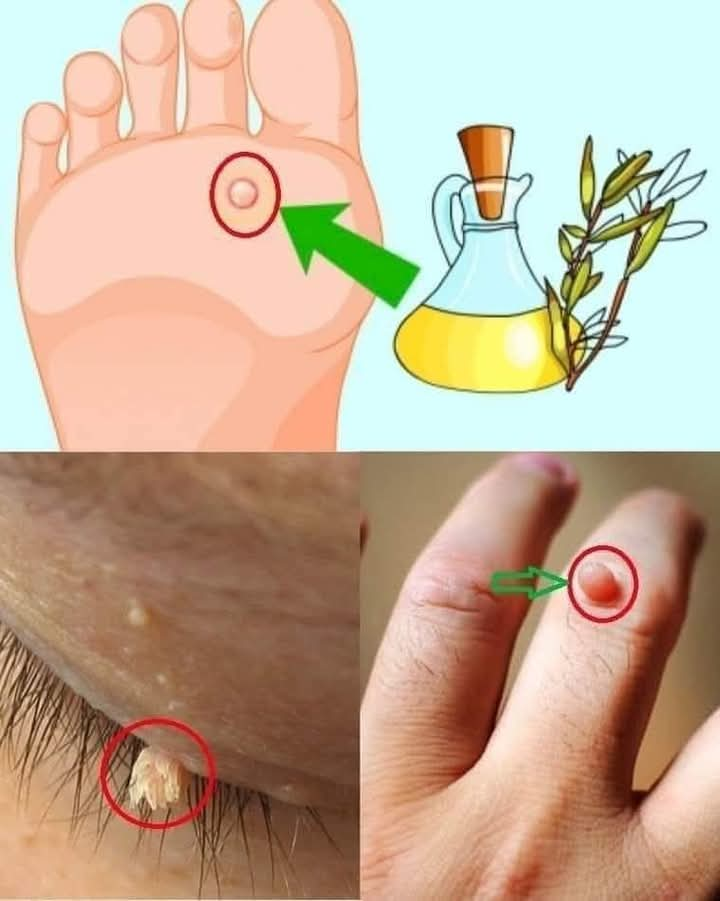Introduction
Warts are small, benign growths on the skin caused by the human papillomavirus (HPV). While warts often go away on their own, many people seek natural remedies to speed up the healing process.
Tea tree oil, known for its antimicrobial and healing properties, is one such remedy that has been used for centuries to treat various skin issues, including warts.
Along with tea tree oil, other oils such as olive oil can be used to support the treatment, providing hydration and preventing irritation to the surrounding skin.
Ingredients
Tea tree oil
Olive oil (or another carrier oil such as coconut or jojoba oil)
Cotton ball or swab
Bandage (optional)
Instructions
Begin by thoroughly cleaning the area around the wart to ensure that it is free from dirt and oils. This will help the tea tree oil absorb more effectively into the skin.
Using a cotton ball or swab, apply a small amount of tea tree oil directly onto the wart. Be careful to avoid the surrounding skin to prevent irritation.
Once applied, you can leave the wart exposed or cover it with a bandage to help keep the oil in place and prevent it from rubbing off.
This will also help avoid transferring the oil to other areas of your skin or clothes.
Repeat this process daily, applying the tea tree oil once or twice per day, depending on your skin’s sensitivity.
Over time, you should begin to notice a reduction in the size and appearance of the wart.
To maintain skin hydration around the wart, you can also apply a small amount of olive oil or another gentle carrier oil around the treated area.
This will help keep the surrounding skin moisturized, preventing dryness or irritation from the tea tree oil.
Make sure to monitor the wart regularly. If you experience any discomfort or irritation, reduce the frequency of application or discontinue use.
It is important to give your skin time to adjust, especially when using potent oils like tea tree oil.
You may also want to consider alternating with other natural remedies, such as apple cider vinegar or garlic, to see what works best for you.
However, tea tree oil is often the first choice due to its proven effectiveness against viral infections.
If the wart persists for more than a few weeks or shows no signs of improvement, it is advisable to seek medical advice from a healthcare professional.
How to Make
Making your own wart treatment with tea tree oil is simple. All you need is pure tea tree oil and a carrier oil, such as olive oil, to dilute it.
This helps to avoid direct irritation from the concentrated tea tree oil.
To begin, add a drop or two of tea tree oil to a small dish or container. Next, mix in a few drops of olive oil or another carrier oil.
This will help the tea tree oil spread more evenly and lessen any potential irritation.
Once the oils are mixed, you can either use a cotton ball or your fingertip to apply the solution directly to the wart.
If you’re treating multiple warts, make sure to prepare a fresh batch each time to avoid contamination.
The key to success with this natural remedy is consistency. Apply the oil mixture regularly and monitor your progress. Many people see results within a few weeks of regular use.
Tips
For best results, always use 100% pure tea tree oil, as it contains the most beneficial compounds for wart treatment.
Avoid any products that contain artificial fragrances or additives.
If you have sensitive skin, consider diluting the tea tree oil more with the carrier oil before application. This will help reduce the chance of irritation.
Tea tree oil can be potent, so it’s crucial to do a patch test before using it on larger areas of your skin.
Apply a small amount of the diluted oil to a small patch of skin and wait for 24 hours to see if any irritation occurs.
Be patient. While natural remedies can be effective, they may take time. Depending on the size and severity of the wart, it may take several weeks to see noticeable results.
If the wart is in a sensitive area like the face or genitals, consult a healthcare professional before applying any treatment to avoid further irritation or complications.
Use the treatment regularly but take breaks if any irritation occurs. Reducing frequency will help your skin recover and still allow the oils to work effectively.
If the wart becomes painful, swollen, or infected, stop the treatment and consult a doctor for alternative medical options.
Conclusion
Natural remedies like tea tree oil can offer a gentle, effective way to treat warts without resorting to harsh chemicals or treatments.
With regular use, tea tree oil’s antimicrobial properties can help diminish the appearance of warts, making it a popular choice for many looking for a more holistic approach to skincare.
However, it’s important to remember that results can vary, and persistent or large warts may require professional medical treatment.
Always consult a healthcare professional if you have concerns or if your wart shows no improvement after several weeks of treatment.
